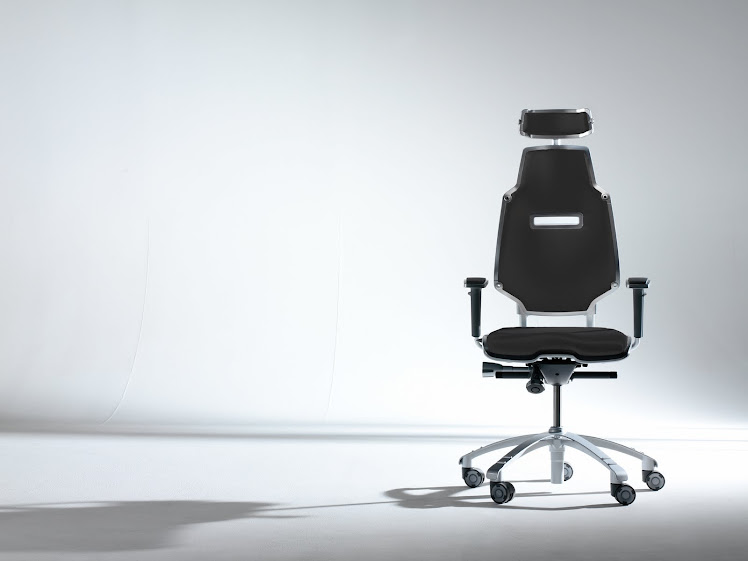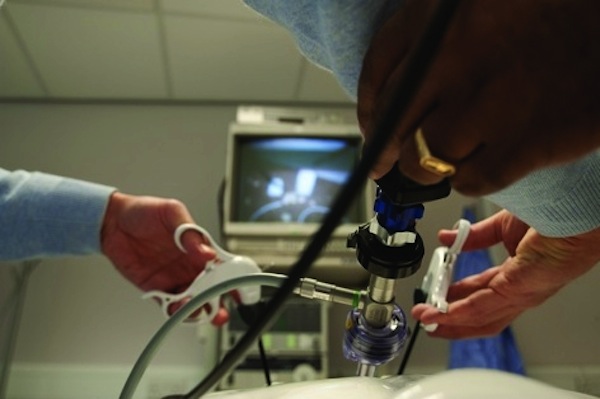Stand or sit with shoulders back and down, then turn your head until your nose sits over the middle of your shoulder. Can't do it? How about this one?
Stand straight with shoulders squared and eyes level, then ask your better half, one of the kids or a colleague to tell you if your ear is centred over the shoulder. If it isn't, you likely have forward head posture, another symptom of too many hours spent hunched forward, necks extended, in front of or over an electronic screen.
This was a common enough problem with TVs, computers, cell-phones, iPods and hand-held gaming devices around. But the advent of the smartphone has made it worse, says chiropractor Manjit Gauba (drgauba. com).
Gauba says many people now spend most of their waking hours in a forward head posture.
Adults in sedentary jobs who sit more than four to six hours a day typically have this problem, Gauba says, although in his practice, he's seeing patients as young as 12 with forward head posture.
Many people haven't heard of it and most usually don't even know they have it. But then one day someone will point it out to them, and suddenly they notice people walking around everywhere with heads bent forward, Gauba says.
"Most people don't know what good posture feels like because they've become used to the slouching posture they have," he explains.
It could be the cause of the headaches, neck pain and upper back tension you've been experiencing.
"Every inch that your head is misaligned forward puts an extra 10 to 20 pounds of stress on your neck and upper back to keep your chin up," he explains.
In severe cases, the posture can also affect breathing, decreasing respiratory capacity by as much as 30 per cent, according to one study. Other studies have linked it to poor mood, depression and decreased brain power.
When using devices that naturally cause shoulders to round forward and heads to extend, people need to be aware of their posture and try to correct it, says Gauba. For example, hold your smartphone higher when texting or browsing the net to reduce the degree to which your head is pitched forward.
Choosing to do nothing could eventually result in your spine remodelling itself permanently into head-forward posture, Gauba says.
The first thing he tells his patients is to start walking more -- outdoors or on a treadmill -- to get them up on their feet and away from a screen.
"I also actually suggest a media fast, tuning out the media for four to six weeks. You don't have to know everything, every minute," Gauba says.
Time away from screens allows muscles to loosen up so you can stand straighter. He then recommends strengthening and stretching exercises to maintain your newly straightened posture.
Sleeping on your back rather than on your side will also help properly align the spine, Gauba adds.
Following his advice, people usually see improvements in their posture within four to six weeks.
Here are three stretches and exercises Gauba recommends desk jockeys stand up to do every hour:
Air rowing
Stand straight with head up, shoulders back and down. Extend arms with elbows bent 90 degrees. Take a deep breath and slowly try to extend elbows back as far as possible, bringing shoulder blades together, keeping arms level with the floor. Hold for three to five seconds. Relax. Repeat three to five times.
Chin glides
Stand straight with shoulders back and down. Look straight ahead, keeping head and chin level. Place two fingers against the chin and gently push straight back as far as you can without feeling any pain. Hold three to five seconds and release. Repeat 10 times.
Elbow press behind the back
Clasp hands behind back. Take a deep breath and squeeze elbows together for 10 to 15 seconds. Relax. Repeat until you reach your flexibility limit.
Read more: http://www.edmontonjournal.com/technology/Posture+casualty+technology/3583824/story.html#ixzz13UYXNYuL
 Do you carry an iPad? Do you need it always stuck to your hand? This is the product for you. This $60 case protects and attaches your iPad to your hand, ensuring you can be “that guy” when people mention iPads. I ran this old girl through her paces and thanks to a very special assistant I discovered that having an iPad stuck to your appendage is not a fun way to live. This patent pending device offers a more ergonomic way to hold your iPad and encourages proper posture, tapping, and Rolfing positions.
Do you carry an iPad? Do you need it always stuck to your hand? This is the product for you. This $60 case protects and attaches your iPad to your hand, ensuring you can be “that guy” when people mention iPads. I ran this old girl through her paces and thanks to a very special assistant I discovered that having an iPad stuck to your appendage is not a fun way to live. This patent pending device offers a more ergonomic way to hold your iPad and encourages proper posture, tapping, and Rolfing positions. 






 Of course, they’re nowhere as slick as
Of course, they’re nowhere as slick as  This isn’t Porsche Design’s entrance into the world of sleds. That happened back in 2008 with
This isn’t Porsche Design’s entrance into the world of sleds. That happened back in 2008 with